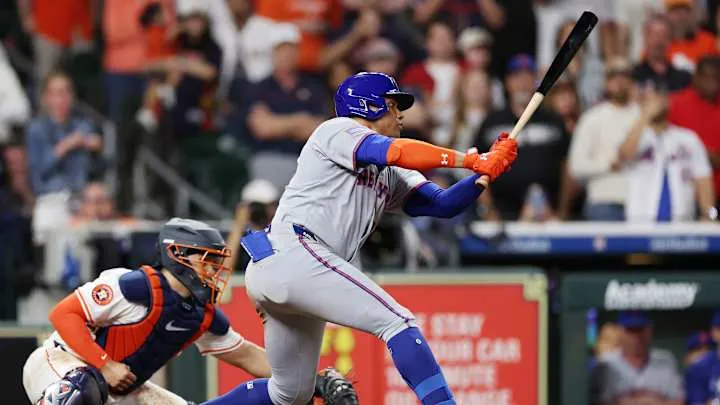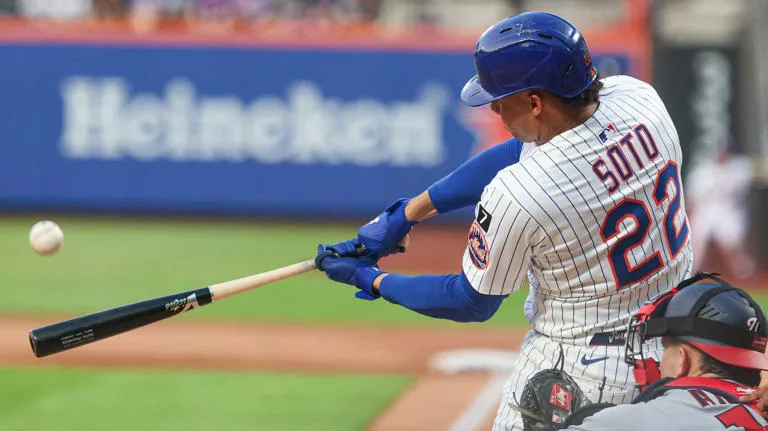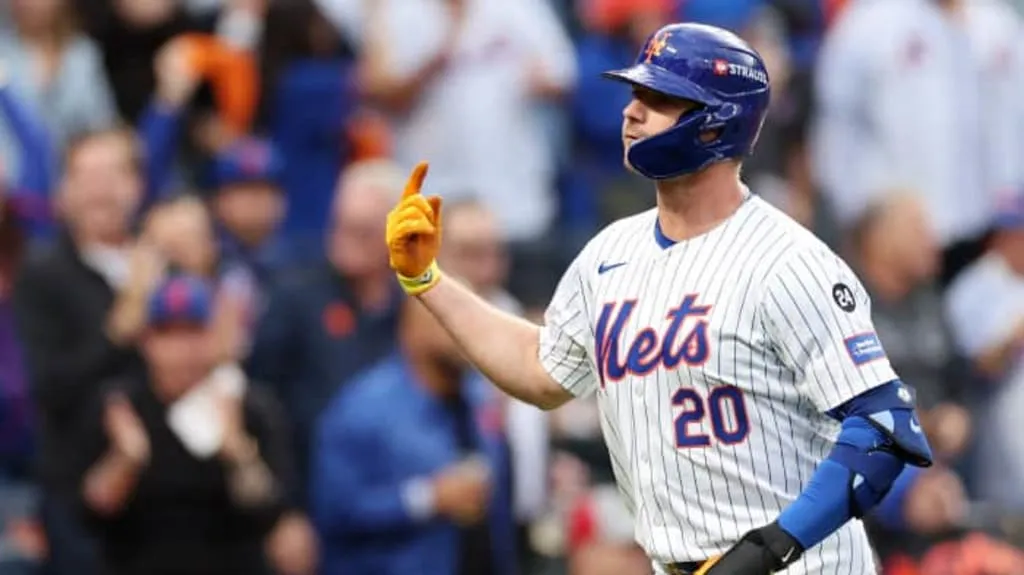

Was Juan Soto Washed? Think Again—He’s Back and MLB Is Shaking
For months, whispers had grown louder. Critics and fans alike questioned: Was Juan Soto washed? Had one of baseball’s brightest stars fizzled out before turning 30? Was the magic that once electrified stadiums fading into mediocrity? If you’ve been asking those questions, it’s time to face the music. Juan Soto is back—and not just back, but back with a vengeance. Major League Baseball is officially on notice, and those who counted him out are now scrambling to recalibrate their predictions for the season.

The Decline That Never Truly Was
It’s easy to look at statistics in isolation. A dip in slugging percentage. A modest batting average. Fewer home runs in a season. Numbers can tell a story, but they rarely tell the whole story. Over the last season and a half, some pundits jumped to conclusions. They called it a decline, a slump, even the start of a downfall. What they missed was the nuance.
Juan Soto, always more than a stat sheet, was adapting. Pitchers had figured out how to avoid giving him anything hittable. His walk rate stayed elite. His plate discipline remained unmatched. But without the gaudy home run numbers, narratives began to shift unfairly. He wasn’t underperforming. He was evolving.
Yet the baseball world, always hungry for drama, began to write its own storyline: Was Soto still elite, or just a name from the past?
The Weight of Expectations
When Juan Soto entered the league, he wasn’t just good—he was phenomenal. He burst onto the scene with a confidence and poise beyond his years. Fans compared him to the greats before he’d even played a full season. By age 21, he was drawing comparisons to Ted Williams, leading his team to a World Series, and becoming the face of modern plate discipline.
But with that meteoric rise came pressure—mountains of it. When Soto was traded from the Washington Nationals, the move shook the league. The receiving team didn’t just get a player—they got an expectation: greatness, night after night. And when greatness becomes the baseline, anything less gets labeled as failure.
That pressure weighed heavy. Soto, now adapting to new clubhouses, fanbases, and cities, had to recalibrate. And during that process, fans mistook adjustment for regression.
They were wrong.
A Historic Turnaround in 2025
If the 2025 season has proven anything, it’s this: Juan Soto is back, and he’s playing angry—in the best way possible. Through the first half of the season, he has been tearing up pitchers, crushing fastballs, and walking with the same calm swagger that once terrified entire pitching staffs.
He isn’t just producing; he’s dominating.
His OPS is soaring, his barrel rate has skyrocketed, and he’s rediscovered that rare ability to not only get on base but to change the entire tempo of a game with a single swing. What’s more impressive? He’s doing it with a level of control and maturity that speaks to a man who weathered a storm and came out sharper, not broken.
Opposing managers now openly admit: You don’t pitch to Juan Soto if you can avoid it. And when you do, you better not miss.
The Psychological Game
What sets Juan Soto apart from even the best of the best isn’t just his bat speed or his power. It’s his mind.
Even during his so-called “down year,” Soto’s walk rate remained elite. He wasn’t chasing bad pitches. He wasn’t pressing. He was waiting, stalking, letting the game come to him. And now, with his timing restored and his mechanics sharp, he’s unleashing everything he’s learned during that quieter period.
His famous “Soto Shuffle” is back with new energy. It’s not just a taunt; it’s a message. He’s inside the pitcher’s head. He’s in the batter’s box, yes—but he’s also in control of the narrative.
And the mental toughness required to endure scrutiny, handle trade rumors, shift organizations, and still perform at the level he is? That’s the part the numbers never show. That’s where Juan Soto separates himself from the crowd.
The Stats Don’t Lie
Through June of 2025, Soto’s batting average has rebounded to over .320, his home run total ranks among the league’s top five, and his on-base percentage is approaching an absurd .460. These aren’t just All-Star numbers. These are MVP numbers.
Baseball analysts have noted a return to peak launch angles, improved exit velocity, and an uncanny ability to hit in all counts. Whether facing righties or lefties, veterans or rookies, Soto has been treating them all the same: as targets.
His hard-hit percentage is the highest it’s been since his World Series-winning season. His strikeout rate has dipped below league average. In clutch situations, he’s become ruthless.
This isn’t luck. This is a fully rejuvenated Juan Soto, silencing doubters with every at-bat.
The Impact on the League
MLB is shaking, and for good reason. When a player like Soto rediscovers his groove, it doesn’t just impact his own team—it tilts the entire balance of power.
Pitching rotations are reworked around how to deal with him. Bullpens are shuffled to ensure a lefty specialist is ready in the late innings. Defensive shifts get adjusted. Analysts spend hours dissecting every swing. Broadcasters can’t help but dedicate entire segments to his resurgence.
And perhaps most significantly, young players are watching and learning. They’re seeing that a slump—or even the perception of one—doesn’t have to define your legacy. Juan Soto has become a blueprint for career longevity, adaptation, and mental resilience.
Fans Are Buying In Again
There was a time, not long ago, when Soto jerseys stopped selling quite as fast. When highlight reels featured him less. When his name in social media threads was followed by more questions than praise.
Not anymore.
Now, fans are lining up early to watch him take batting practice. Kids in the crowd mimic his shuffle. Commentators discuss him in MVP conversations again. His image is back on posters, digital campaigns, and promotional banners. Once again, Soto is a marketing dream—not because of hype, but because of performance.
This isn’t just a comeback; it’s a rebirth.
Critics Are Eating Their Words
Every player has critics. But Soto’s critics were particularly loud—because they once expected so much from him. And when he didn’t immediately meet their sky-high expectations, they turned on him. Now? They’re walking it back.

Baseball writers who once questioned his focus are now calling him the most dangerous hitter in the game. Analysts who labeled him overrated are using words like “transcendent” and “generational” again. Even rival fanbases, though reluctant, are acknowledging the obvious: Soto never left. He was just recalibrating.
And now that he’s back at full strength, there’s not a pitcher in the league who’s safe.
A Legacy Reclaimed
So where does this leave Juan Soto in the grand scheme of baseball’s modern era? Right where he belongs: near the top.
He’s not just having a hot streak. This is a reminder that greatness isn’t linear. That even superstars face adversity. But the true legends? They fight through it. They come back stronger. And they force you to rewrite the story you were so sure you knew.
If the 2025 season continues on its current path, Soto may find himself with another Silver Slugger, possibly an MVP, and certainly a massive contract extension that silences any remaining doubts.


















